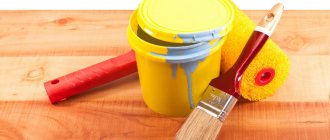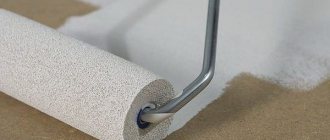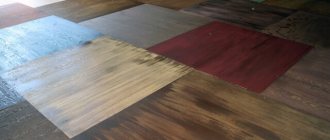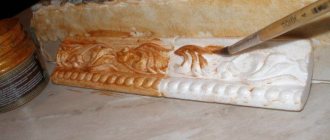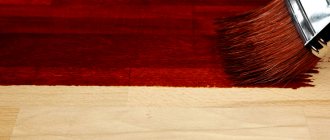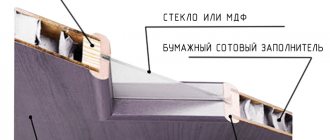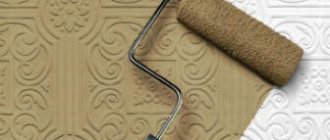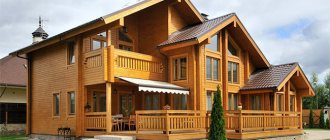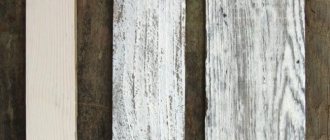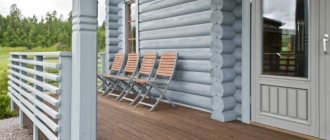Plywood is considered a popular material for decoration, as well as for furniture production. Demand for it is growing due to its low cost, and the material itself consists of several thin sheets of veneer glued together. When carrying out repair work, painting of plywood is often required: in order to do this efficiently, you need to familiarize yourself with the sequence of the procedure, as well as choose the right paint composition.
Painting plywood
Paint selection
When deciding what to paint plywood with, it is important to keep in mind the expectations of the final result. You can simply do the staining. It will allow you to change the color of the veneer, make it darker, deeper and leave it that way. The procedure allows you to achieve the effect of using valuable wood species. Wood stain is an excellent antiseptic. It gives the base a matte look.
You can then varnish the stained surface. It will acquire a pleasant gloss. When interior design requires preserving the natural look of wood veneer, plywood products are simply varnished. In this design, the material looks noble.
If there is a need to completely hide the nature of the origin of the material, it is better to paint it completely, including the ends. The varnish can only be applied to a dry surface. Then it won't crack after drying. Urethane and polyurethane compounds are best suited for these purposes. They are more expensive than others, but they have increased strength characteristics.
Plywood coated with stain Source 1.bp.blogspot.com
Cleaning and sanding the material
When purchasing raw materials, you should pay attention to its texture: if it is very rough, the material must be cleaned and sanded. Before painting the plywood yourself, experts recommend drying it. Most likely, the sheets of material were sold from a warehouse, and it was often humid and damp there, so the wood could absorb some of the moisture. It is not possible to dry the product quickly, so the sheets of material are sent to a dry and warm place for 3 days.
With this tool you can sand small surfaces. If the sheets of material are large, it is better to use a power tool.
Once the plywood has dried, you can begin preparing it:
- Cleaning. This simple process is carried out to ensure that no large specks or contaminants remain on the surface of the raw material. Plywood can absorb moisture, so do not use water when cleaning. High-quality wood will always have a distinctive pattern - you also need to walk over it and check for contamination. Dirt must be removed using a coarse brush.
- Sanding. This procedure requires perseverance and care. Sanding consists of two stages: the first involves sanding with coarse-grain sandpaper, and the second with fine-grain sandpaper. The important thing here is to achieve not beauty, but a smooth surface. According to the advice of the masters, it is better to use a special grinding machine - this will speed up the work.
After passing coarse grain across the surface, it is necessary to change the nozzle to paper with fine dispersion. This procedure can easily be carried out manually, but it will take more time. Don't forget about the edges of the product - they also need to be cleaned and sanded.
Varnishing plywood
Recommendations for varnishing
When starting to process the canvas, you should take into account some nuances. To get a good result and avoid unpleasant consequences, you need to:
The composition should be applied evenly in the direction of the wood fibers
- when painting plywood with acrylic paint indoors, cover furniture and floors that cannot be treated with polyethylene;
- choose a suitable putty to match the pigment used;
- apply the composition evenly along the wooden fibers;
- do not allow the formation of too thick a layer of pigment, which leads to the appearance of smudges;
- apply the composition in two layers if you need to create a rich shade;
- Use masking tape when combining different colors.
How to properly paint different types of plywood: 3 stages of processing plywood sheets
July 16, 2020
Read later
We will send the material by email
Plywood is a wood veneer - this coating requires additional processing, after which a protective layer is formed. In order for the surface to last for many years, you need to know how to paint plywood - how to prepare it for painting, what material is best to use and how to apply it correctly. Knowing the correct operating technology, you can keep the coating looking beautiful for a long time.
Painting a ceiling trimmed with plywood Source antkachev.ru
Painting process
The compounds are applied in a thin layer, avoiding drips and streaks.
Painting plywood is not difficult. It is important to follow the recommendations.
- For large areas, it is better to take a spray gun. If the surface to be painted is small, use brushes or rollers.
- Dilute the paint immediately before the procedure. If the composition dries quickly, make a minimum portion.
- Apply any paints and varnishes only along the wood fibers.
- If a more intense shade is required, apply in several layers, waiting for the previous one to dry.
You cannot apply a thick layer at once: the paint will harden unevenly, flow, and bubbles will form.
How to coat correctly
The stain is applied by rubbing.
There are several options for applying paintwork. The method is chosen depending on the viscosity and hiding power of the composition.
- It is better to apply stains with wax or oil mixtures by rubbing. A portion of the composition is poured onto the surface and carefully distributed with a sponge or roller.
- It is best to apply paint from a can. This way you get a very even thin layer.
- A foam roller is used when applying liquid compositions of low coverage. This allows you to avoid divorces.
- Thick paints and stains are applied with a paint brush to obtain a rich shade and emphasize the structure.
If oil stain is applied in several layers, after the first has dried, you need to sand the surface to remove any raised lint.
Wood imitation
Plywood products can be given the appearance of noble antiquity. There are a lot of methods. The simplest involves using a candle .
- Paint the sheet with the chosen color, apply strokes randomly in different directions.
- After drying, use a paraffin candle to wipe the sheet in the same way - in random or selected places.
- Apply a second layer of paint - a matching or contrasting shade. The plywood is covered evenly.
- While the paint is not dry, wipe the layer with a rag. In areas where there was wax, it is easily erased, in others it remains.
You can apply a third layer of paint or, after drying, varnish the plywood. It turns out to be a very interesting structure.
Features of painting white
Even with high hiding power of paint, it is difficult to obtain a pure white color . Plywood is prepared for this: primed with white mixtures and sanded. Matte paints are used for coating , since glossy ones do not hide, but highlight the slightest surface and color defects.
Drying
Drying plywood is a preliminary stage of work. This is done if you need to paint or varnish material brought from the cold. The sheets are placed in the room where they will be used and kept for about a day. If the material was stored or transported at a temperature difference of more than 10–15°C, it will take 3 days.
Painted plywood dries naturally. Hairdryer is not used .
Surface priming and puttying
The next two stages of preparing plywood for paint treatment are priming and puttying. It is necessary to paint plywood with a primer in order to fill all existing voids on the surface: this will prevent further cracking of the material. Before applying the composition, degreasing is carried out so that no extra pieces of wood remain on the material. It is necessary to prime the plywood in 3-4 layers. When further painting it in a transparent color, the craftsmen recommend additionally applying several layers of antiseptic and fire retardant on top of the primer - they will protect the product from fire and prevent it from turning blue.
Priming can be done using a small brush and a pre-selected primer material.
It is necessary to cover the plywood with a new layer of primer only after the previous layer has completely dried. This work may take several days. When the priming procedures are completed, it is recommended to thoroughly dry the material again. The correct technology for preparing for painting contains one more step - puttying. Plywood especially needs additional protection, and it is the putty that will protect the coating from mechanical damage in the future.
Sanding plywood
The process looks like this:
- White acrylic putty is used for work. Due to the fact that plywood is often used to level various types of surfaces (floor, ceiling or walls), mechanical protection will not be superfluous. It is the acrylic base that makes the plywood moisture resistant, which makes it possible to use it in damp rooms by attaching it to a slatted frame.
- Tools and application. To work you need a spatula and a rule. The putty is applied in small strokes, after which the layer is usually leveled. The optimal coating thickness is 2-3 mm, with special attention should be paid to joints and recesses.
At the priming stage, before filling, you can apply a stain to the surface of the material - this will also additionally protect it.
Spray painting
Applying varnish
Sometimes varnish is used instead of paint. The plywood is first cleaned and sanded using sandpaper or a sanding machine, then it must be cleaned of any accumulated dust and degreased. Otherwise, all dirt will be visible under the varnish.
After applying the first layer of varnish, let it dry. Sand the first layer and then cover the surface with another layer. As a result of this approach, varnished plywood becomes dull.
If you want to get a glossy surface, you need to apply another layer of varnish on top. This time it is advisable to apply it using a sprayer to evenly distribute the varnish composition.
Is it necessary to paint plywood?
This material has a number of positive qualities, including environmental friendliness, strength, attractive appearance, and affordable cost. In addition, plywood has good resistance to moisture, but still, when directly interacting with water or being in conditions of increased dampness, it quickly becomes unusable. To avoid this, it must be painted when laying the material as a finishing floor covering.
